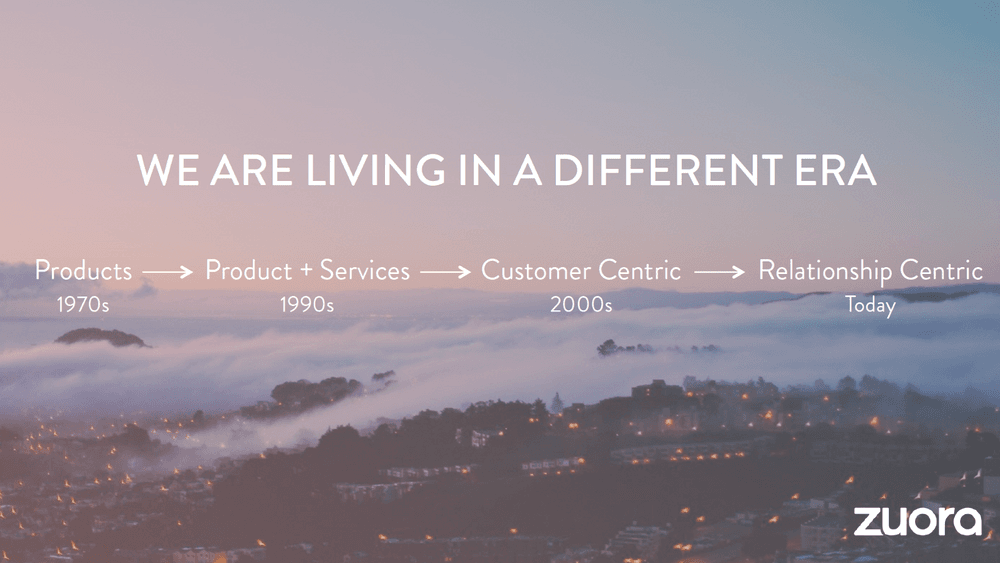Wie man Verkaufsgespräche wie ein Profi bucht und leitet
Sales Pipeline Masterclass: Vierter Teil

You’ve defined your target audience, built your B2B lead list and have started warming them up for the sales cycle. The obvious next step it to be able to book and run sales meetings to close the deal. But how do you manage all your leads, from booking a call with every single lead to preparing a sales deck for them and conducting the perfect demo without missing your chance to convert them?
This post is Part Four in a new Masterclass series on how to build your sales pipeline. Building a strong sales pipeline is the #1 key to sales success. That’s why we created this indispensable step-by-step guide, to teach you how to build your pipeline the right way.
– Jeroen Corthout, Co-Founder Salesflare, an easy-to-use sales CRM for small B2B companies
In this fourth part of the series, we’ll be walking you through how to book and run sales meetings without losing your mind.
1. Automatisieren Sie die Planung Ihrer Verkaufsgespräche
Finding a common moment of availability for a sales meeting between you and your lead, can be frustrating. You often end up asking each other for alternatives endlessly over email and chat. Now imagine expanding that effort across your whole B2B leads pipeline. You’ll only end up wasting a lot of valuable time that you could have spent instead either generating more leads and preparing a sales pitch.
Einfach ausgedrückt, kann die Planung von Verkaufssitzungen frustrierend und eine Zeitverschwendung sein.
Deshalb müssen Sie einige Regeln für Ihre Vertriebsbesprechungen aufstellen und mit der Automatisierung beginnen, um mehr zu erreichen.
Einige tolle Tools, mit denen Sie Ihre Meetings viel einfacher buchen können
- Calendly: Ein automatisiertes Planungstool, mit dem Sie Ihre Verfügbarkeitspräferenzen festlegen, den Link zu Ihrem Kalender mit den Leads teilen und sie eine Zeit auswählen lassen können, die auch ihnen passt. Mit dem Tool können Sie auch verschiedene Zeiträume für die Verkaufsgespräche festlegen (z. B. 30 Minuten, 1 Stunde usw.) und es lässt sich problemlos in einen Kalender Ihrer Wahl integrieren.

- x.ai: Stellen Sie sich vor, Sie hätten einen persönlichen Assistenten, der sich um die Planung all Ihrer Verkaufsgespräche kümmert. x.ai hat eine intelligente Planungssoftware entwickelt, die genau lernt, wann, wo und wie lange Sie ein Verkaufsgespräch führen möchten. Sie tut dies auf der Grundlage Ihrer Konversation über E-Mail oder Chat-Apps. Alles, was Sie tun müssen, ist, Ihren Assistenten in Kontakt zu halten.
- Clara: Dieser virtuelle Mitarbeiter lernt aus Ihrer Kommunikation mit dem Lead per E-Mail, um einen Termin für Ihr Verkaufsgespräch zu vereinbaren. Die natürlichsprachliche Schnittstelle macht es praktisch unmöglich zu erkennen, dass es sich bei dem Absender tatsächlich um eine KI handelt.
There are still more tools, like Need To Meet, Mixmax, Schedule Once and others that you could use to automate scheduling your sales meetings. The idea is to save time on the usual back-and-forth, and focus on what matters the most – the conversation.
2. Fügen Sie die Leads zu Ihrem CRM hinzu
Solange es sich um potenzielle Kunden handelt, ist es ein kluger Schachzug, Ihre B2B-Kontakte in ein CRM (Customer Relationship Management Software) aufzunehmen. Auf diese Weise können Sie sich einen Überblick über Ihre Lead-Pipeline verschaffen. Außerdem können Sie durch die Erstellung von Aufgaben und Erinnerungen verfolgen, welche Leads Sie weiterverfolgen müssen.
The CRM also stores all relevant customer information along with easy notes on the conversation made so far, in one place. This data can then be used to segment your prospects further, or to drive conversations in sales meetings based on when you’ve heard from whom and about what.
Außerdem hilft es den Vertriebsteams, eng zusammenzuarbeiten und den Kundenstamm auf einen Blick zu erfassen. Dadurch wird es einfacher, wichtige Vertriebskennzahlen wie Abschlussquote, Vertriebszyklus, Pipeline-Wert und mehr im Auge zu behalten. So können Sie Ihren Vertriebsansatz für bessere Meetings optimieren.
Ein intelligentes CRM hilft Ihnen darüber hinaus, bestimmte Teile des Verkaufsprozesses zu automatisieren. Von der Verfolgung spezifischer Kundendaten bis zum Versand von Follow-up-E-Mails - ein intelligentes CRM kümmert sich um alles, während Sie sich auf die Buchung von Verkaufsgesprächen mit der verbleibenden Pipeline konzentrieren.
But that’s not all.
An easy to use CRM is truly mobile and can therefore be used across all devices. It offers all of the above functionalities wherever you go. No matter if you’re commuting or in the office, a mobile CRM helps you conduct sales meetings that are always driven by data.
3. Bestimmen Sie die Art Ihrer Verkaufsgespräche
Another factor that can make or break a deal is how well you’re able to understand what kind of sales meetings your leads prefer. Would they like to jump on a quick video call for a demo or would they prefer to meet in person?
Now, depending on who your lead is, the nature of your business and your sales cycle, you need to choose what type of meeting suits you as well – virtual meeting or a face-to-face meeting.

Virtual or video sales meetings are great if the participants are in different locations and would prefer to save time and money on travel. It’s also best suited for those who only have limited time set aside for the meeting. You cut out on things like commuting and having to book a venue, focusing more on making the most out of the time you have. All you need, after all, is a stable internet connection.
While they’re definitely easier to conduct, virtual meetings unfortunately don’t work for everyone.
Face-to-Face- oder Live-Verkaufsgespräche bieten Unternehmen und Interessenten ein freieres Umfeld für die Kontaktaufnahme. Im Vergleich zu Online-Anrufen können sich Ihre Interessenten bei dieser Art von Treffen besser mit Gesten und Worten ausdrücken, die ihre Botschaft effektiver vermitteln können. Dies ist natürlich nur möglich, wenn sich alle Beteiligten am selben Ort befinden oder über die Mittel verfügen, zu einem gemeinsamen Ort zu reisen.
Bestimmen Sie die Art Ihres Verkaufsgesprächs, indem Sie sich selbst fragen:
- Befinden sich Ihre Kontakte am gleichen Ort?
- War Ihre Kommunikation bisher effektiv?
- Handelt es sich um Einzelgespräche oder um Treffen mit einer Gruppe?
- Haben Sie die Ressourcen für Live-Sitzungen?
- Wird die von Ihnen gewählte Art der Besprechung dazu beitragen, den Verkaufszyklus zu verkürzen?
- Wie lange dauern diese Treffen normalerweise? (Kürzere Sitzungen machen es weniger interessant, Zeit mit dem Pendeln zu verbringen).
4. Erstellen Sie ein Verkaufsdeck, das sich verkauft
Laut Harvard Business Review sind an einem typischen B2B-Verkaufsgeschäft mindestens 6,8 Personen beteiligt, von denen nicht alle an der Demo teilnehmen werden. Einige von ihnen werden um Zusammenfassungen in Form eines Decks bitten.
Einfach ausgedrückt: Eine Demo reicht für ein Verkaufsgespräch nicht mehr aus.
You need a well-documented sales deck that helps you convey your message – right from the contact you have a sales meeting with to the actual decision maker who wasn’t present. Having a sales deck actually helps to ensure that your unique selling point is conveyed as is, without running the risk of changing more and more with every extra participant in the communication.
Putting together an effective sales deck doesn’t mean listing out your product features or overloading each slide with information about your business. It means creating a consumable format for the prospect to understand what you have to offer by using storytelling.
Ein effektives Verkaufsdeck gibt Antworten auf die folgenden Fragen:
- Was ist das Problem, das Sie lösen wollen?
- Wer hat diese Probleme?
- Welche Kosten sind mit dem Problem verbunden?
- Welche Lösungen gibt es?
- Was sind die Schwächen dieser Lösungen?
- Was hat sich geändert, um eine neue Lösung anzubieten?
- Wie funktioniert diese Lösung?
- Was ist der Beweis dafür, dass Ihre neue Lösung funktioniert?
- Wie hoch sind die Kosten?
Denken Sie daran, wie Ihr Interessent zu denken. Ihr Verkaufsdeck muss gerade so viele Informationen bieten, dass Ihr Interessent Ihr Angebot verstehen kann und weiß, wie er davon profitiert, und dass er zu einem Abschluss kommt.
This is why you should section your sales deck based on the questions above, making it easier to consume by all possible types of participants in a B2B sales deal – from those who prefer an in-depth read to those who’d rather just look at the numbers.
To give you an example of what actually works in sales meetings, we broke down Zuora’s sales deck in detail. They start by naming the big, relevant changes in the world. This sets the tone for what they’re going to talk about right at the start.
Den vollständigen Beitrag können Sie hier nachlesen.

5. Führen Sie ein überzeugendes Verkaufsgespräch
With your sales deck ready, it’s time to go out there and conduct a kick-ass sales meeting to demo and sell your product.
Ihr Verkaufsdeck wird zwar einen Teil des Gesprächs leiten, aber denken Sie daran, dass es bei erfolgreichen Verkaufsgesprächen in erster Linie um die Zuhörer geht; das Produkt kommt erst an zweiter Stelle.
Ein paar Regeln, die sicherstellen, dass Ihre Verkaufsgespräche mit dem Verkauf des Produkts enden:
- Konzentrieren Sie sich auf Ihr Publikum und nicht auf sich selbst – This will help you come up with key points to showcase how you can help them achieve their goals.
- Halten Sie Ihr Verkaufsgespräch absolut klar – From the beginning to the end, set the right expectations. Start with what you’re going to talk about, reinforce the same message midway and make sure to end the meeting with a quick recap of all the important takeaways.
- Weitere Fragen stellen – Don’t use the sales meeting to only talk about your product. Use it as an opportunity to understand your audience better, by asking questions at every step.
- Ein guter Zuhörer sein – When asking questions, make sure you listen to the prospect carefully and take notes. You don’t want to miss out on something that might indicate a current need of theirs or an opportunity to plug in your solution
- Gleichgewicht zwischen Sympathie und Wissen – This one’s a secret we use. People like to buy from people they like or can trust. A know-it-all personality might just rub the prospect the wrong way. So try to be like a friend who wants to share knowledge, and not show off. If you don’t know something, just be honest about the fact that you don’t know.
- Aufzeichnung und Transkription Ihrer Verkaufsgespräche und automatische Protokollierung in Salesflare – You can use these recordings afterwards to analyze your performance or even send them to the leads for a quick recap in a follow-up email. This is especially useful in the case of product demos as the prospects can go over them again later.
- Ändern Sie kontinuierlich Ihren Ansatz – Don’t become monotonous with your sales meetings. Be sure to learn from every meeting and change your sales approach to make them better. Learning from the target market is the best way to sell in that market.
Schlussfolgerung: Automatisieren Sie die Planung, behalten Sie Ihre Pipeline in einem CRM im Auge und konzentrieren Sie sich auf das Gespräch.
No matter how good your product is, the trick to make your sales meetings actually convert is to focus on your leads. You can do this only when you remove yourself from tasks that end up taking too long with no end result – like scheduling the meeting in the first place!
Durch den Einsatz intelligenter Automatisierung und Technologie müssen Sie keine Verkaufsgespräche mehr buchen, sondern können sich voll und ganz auf deren Erfolg konzentrieren!
All set to book and run your sales meeting now? Well, don’t forget to tune in next week for Part Five in our Sales Pipeline Masterclass: Lead Qualification: How To Qualify Your B2B Leads And Improve Your Sales Process. Need a refresher? Go back and read Part Three: How To Warm Up Your B2B Leads.

Wir hoffen, dass Ihnen dieser Beitrag gefallen hat. Wenn ja, empfehlen Sie ihn weiter!
👉 Sie können @salesflare folgen auf Twitter, Facebook und LinkedIn.
if(window.strchfSettings === undefined) window.strchfSettings = {}; window.strchfSettings.stats = {url: “https://salesflare.storychief.io/sales-pipeline-management?id=1797879144&type=2”,title: “How To Nail Sales Pipeline Management Like A Pro”,id: “b4bf56dd-9b24-4318-a472-b8522fe85e05”}; (function(d, s, id) { var js, sjs = d.getElementsByTagName(s)[0]; if (d.getElementById(id)) {window.strchf.update(); return;} js = d.createElement(s); js.id = id; js.src = “https://d37oebn0w9ir6a.cloudfront.net/scripts/v0/strchf.js”; js.async = true; sjs.parentNode.insertBefore(js, sjs); }(document, ‘script’, ‘storychief-jssdk’))- 4 B2B-Vertriebsstrategien, die Ihnen garantiert mehr Kunden bringen - 23. Januar 2024
- Wie B2B-Unternehmen Vertriebswerkzeuge integrieren können - 18. April 2019
- Wie B2B-Unternehmen Kundendaten automatisieren können - 11. April 2019
